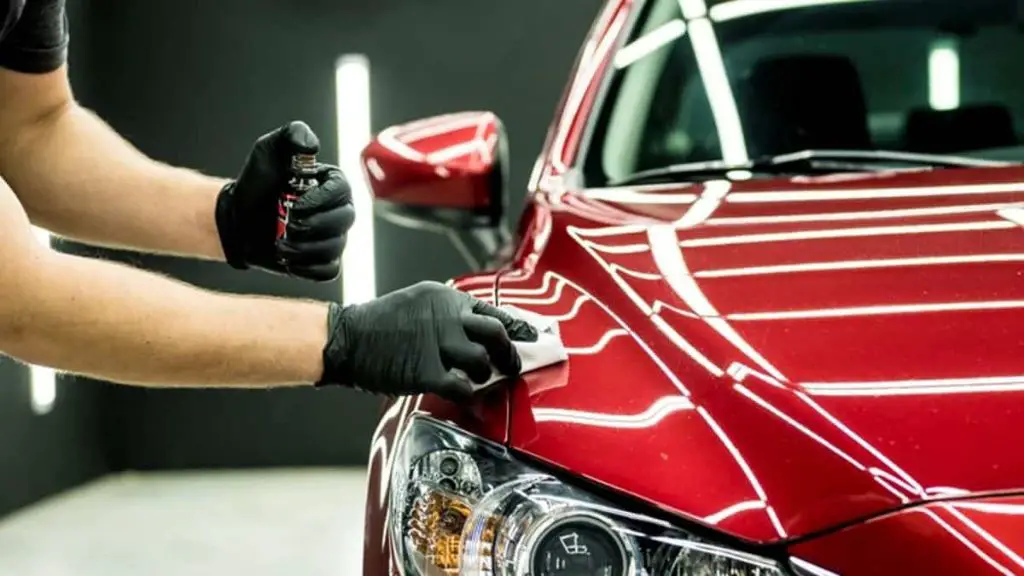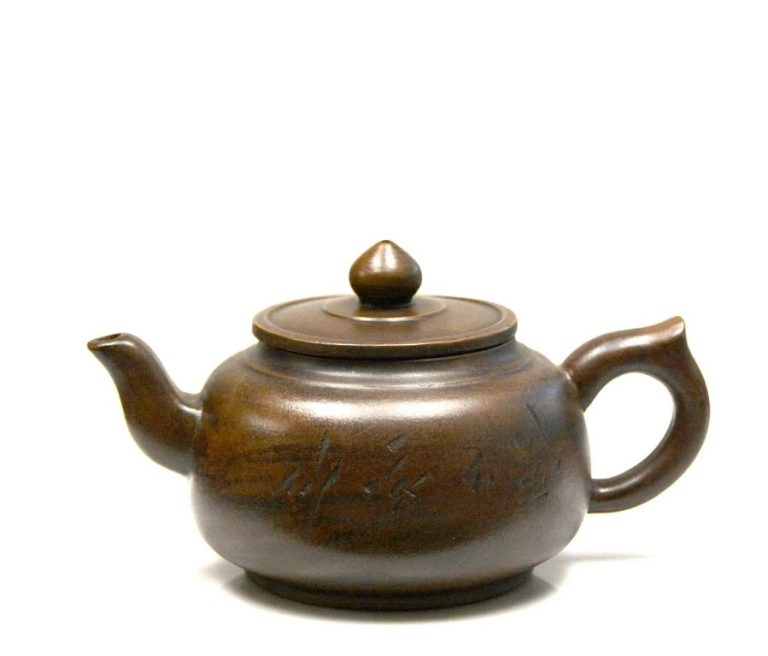How Do You Seal Ceramic Paint?
Ceramic paint has become an increasingly popular choice for painting surfaces like concrete, wood, and metal. It provides a smooth, durable, and decorative finish. However, like any paint, ceramic paint needs to be properly sealed to protect the finish.
Sealing ceramic paint serves several important purposes. It helps prevent fading caused by UV exposure from sunlight. It provides an extra layer of protection against scratches, scuffs, and stains. Sealing also helps prevent moisture from penetrating into the substrate below, which could cause the paint to blister or peel. Applying a sealant ensures the ceramic painted surface retains its beauty and durability for many years.
There are several options when it comes to choosing a sealer for ceramic paint. This article provides tips on how to properly prep the surface, select an appropriate sealer, apply it correctly, and maintain the seal over time. Following these best practices will help ensure the ceramic painted surface is protected and looks its best.
Prep the Surface
Properly preparing the surface is crucial before applying a ceramic coating. Start by thoroughly washing and decontaminating the surface to remove any dirt, grime, oils, tar, or previous waxes/sealants. Use a pH-neutral soap like Mr. Pink from Chemical Guys and rinse thoroughly.
Next, it’s important to abrade and smooth the surface through polishing and sanding. This allows the ceramic coating to fully bond. Use a polish like Meguiar’s Ultimate Polish to smooth any imperfections. Then wipe away any polish residue before applying the coating.
Sanding can also help abrade and degloss the surface. Start with 600 grit sandpaper and work up to 2000 grit for a smooth finish. Be sure to wipe away any sanding dust afterwards.
The surface should be completely clean, smooth, and dry before applying the ceramic coating for maximum results.
Choosing a Sealant

When selecting a sealant for ceramic painted surfaces, you’ll want to consider acrylic, polyurethane, and wax-based options.
Acrylic sealants are water-based, making them easy to apply and clean up. They dry quickly and provide decent protection for ceramic paint. Acrylics also resist yellowing and remain crystal clear.
Polyurethane creates a high-gloss protective layer that is extremely durable. Oil-based polyurethane can yellow over time but water-based options are also available. Polyurethane works well for indoor and outdoor ceramic pieces.
Wax sealants provide a smooth satin finish and are easy to apply. Carnauba wax is popular for its hardness and ability to repel water. Wax holds up well outdoors but requires more frequent reapplication than acrylics or polyurethanes.
Consider the finish you want, where the ceramic piece will live, and how much maintenance you’re willing to do when selecting a sealant. Test products in an inconspicuous area first.
Applying the Sealant
Applying a quality ceramic paint sealant properly is crucial to get the full protective benefits. Here are some tips for application:
- Make sure you have the proper tools – microfiber applicators, lint-free cloths, gloves, etc. The Cerakote instructions recommend their branded wipe and applicator https://cerakoteceramics.com/paint-sealant-instructions/.
- Prep your work area and vehicle surface before applying. Make sure the paint is clean, cool, and dry.
- Apply using small, overlapping circular motions. Apply 2-3 thin, even coats for full coverage, allowing 15-20 minutes between coats.
- The sealant will be dry to the touch within 1-2 hours at 70°F. Allow 24 hours for a full cure before getting the paint wet or putting vehicle into service.
- Inspect closely under lighting to make sure there are no high spots, streaks or missed areas. Reapply if needed.
Following the manufacturer’s instructions for method, prep, and cure times is highly recommended when applying ceramic paint sealant to get the durable protective results.
Curing and Drying Time
Proper curing is essential for the ceramic sealant to achieve maximum hardness and protection. Most ceramic sealants require a curing time of 24-48 hours before the treated surface can be used and exposed to water. During this curing period, the sealant chemically cross-links and hardens on a molecular level.
It is crucial not to get the treated surface wet or wash the vehicle during the initial 24-48 hour curing time. Exposure to moisture prevents the sealant from fully hardening. Driving carefully and avoiding rain are advised. Garage parking is ideal.
According to experts, waiting 72 hours allows the sealant to cure even harder before exposing the treated surface to moisture and potential contaminants. While the sealant may feel dry to the touch within a few hours, the curing process continues for at least 24 hours before full hardness is reached. Patience allows for optimal durability and protection.
The curing timeframe can depend on environmental factors like humidity and temperature. In general, cool and dry conditions allow ceramic coatings to cure harder and faster. The product manufacturer’s instructions should be consulted for specific cure times.
After the initial 24-48 hour cure, additional hardness develops over the following days and weeks through a process called “outgassing.” A full cure can take 7-14 days or longer. Avoiding car washes and abrasion during this period allows the coating to continue hardening properly.
With patience and proper curing, ceramic coated surfaces become exceptionally hard, slick, and resistant to contamination. But the coating’s durability depends on allowing adequate cure time before use. Once fully cured, routine cleaning and maintenance will help maximize the sealant’s longevity.
Maintaining the Seal
Ceramic paint sealants protect the paint by creating a hydrophobic layer that repels water, contaminants, and UV rays. However, this protection will diminish over time and needs to be maintained to keep the paint looking its best.
Most experts recommend reapplying a ceramic paint sealant every 1-2 years to maintain protection [1]. How often you need to reapply depends on factors like miles driven, exposure to harsh weather, how often the vehicle is washed, and the quality of the ceramic coating used. Vehicles that are driven more or exposed to things like rain, snow and road salt will need reapplication more frequently.
Look for signs of diminished water beading, water spots, and reduced gloss to determine when it’s time for a renewal coat. When water no longer beads and sheets off the paint, reapplying the sealant will restore hydrophobic properties. This maintains the vibrant color of the paint by preventing oxidation and etching from contaminants.
Special Considerations
The method and materials used to seal ceramic painted projects depends on if the final project will be used outdoors or is bakeable. Here are some special considerations to keep in mind:
For outdoor ceramic painted projects, it is usually best to use an outdoor-rated acrylic sealer or an epoxy resin. Acrylic sealers like Optimum Ultra Ceramic are specially formulated for outdoor use and will provide good UV protection to prevent fading. A 2-part epoxy resin like 3M Ceramic Coating 39901 forms a thicker, more durable protective layer ideal for outdoor use.
For ceramic paint on bakeable projects like mugs, dishes or tiles, it is crucial to use a sealant rated for high temperatures like a ceramic glaze or resin that can withstand oven/dishwasher heat. Otherwise, the sealant could fail at high temps. Specialty ceramic sealers like Gare, Inc.’s CeramaSeal 200 resist temperatures up to 2000°F.
Common Problems
While ceramic coatings provide great protection for your vehicle’s paint, improper application can lead to some issues down the road. Three of the most common problems with ceramic coatings are bubbling, cracking, and peeling.
Bubbling occurs when trapped air or outgassing from the paint causes bubbles or blisters under the ceramic coating. This typically happens if the paint isn’t fully cured before applying the coating. Bubbling can be fixed by sanding down the area and reapplying the ceramic coating.
Cracking happens when the ceramic coating loses flexibility, often due to being too thick in certain areas. Temperature fluctuations and vehicle movement can then cause the hardened coating to crack. Lightly sanding and reapplying a thin layer of ceramic coating should repair cracking.
Finally, peeling occurs when the ceramic coating did not bond correctly to the paint surface. This is usually caused by inadequate paint preparation and cleaning or applying the coating in very thick layers. To fix peeling, you must fully remove the coating and start over with proper preparation and application techniques.
Following the manufacturer’s instructions for surface prep and application is key to avoiding these common ceramic coating problems. Proper curing times and coating thickness will also minimize bubbling, cracking, peeling and other issues.
Safety Tips
When working with ceramic paint sealants, it’s important to take proper safety precautions. Here are some tips:
Ventilation – Make sure to work in a well-ventilated area, whether indoors or outdoors. Sealants and solvents can release strong fumes, so open windows, use fans, or consider wearing a respirator.
Personal Protective Equipment – Wear gloves, eye protection, and clothing that covers your skin. Sealants can irritate eyes and skin. An apron or coveralls can help protect your clothing.
Storage – Keep sealants tightly closed and stored away from heat, sparks, flames, or ignition sources. Don’t store near food. Keep out of reach of children and pets. Allow solvents to fully evaporate before throwing away rags or paper towels.
Read the product safety information and follow all instructions. Never use sealants near open flames or ignition sources, as solvent fumes are flammable. Work safely and cautiously when applying ceramic paint sealants.
Conclusion
Sealing ceramic paint properly requires careful prep, choosing the right sealant, and following application instructions. The key steps are:
- Clean and scuff the ceramic surface so the sealant can adhere.
- Select a water-based acrylic sealant designed for ceramics and follow the label directions.
- Apply thin even coats, allowing proper drying time between coats.
- Allow the sealant to cure fully before use, usually 7 days.
- Avoid immersing sealed pieces in water during the curing period.
- Reapply sealant annually or as needed to refresh protection.
Following these tips will help ensure your ceramic paint job keeps its vibrant colors and resists scratches, fading, and wear from use or cleaning. With proper sealing, your artistic creations can be enjoyed for many years.


